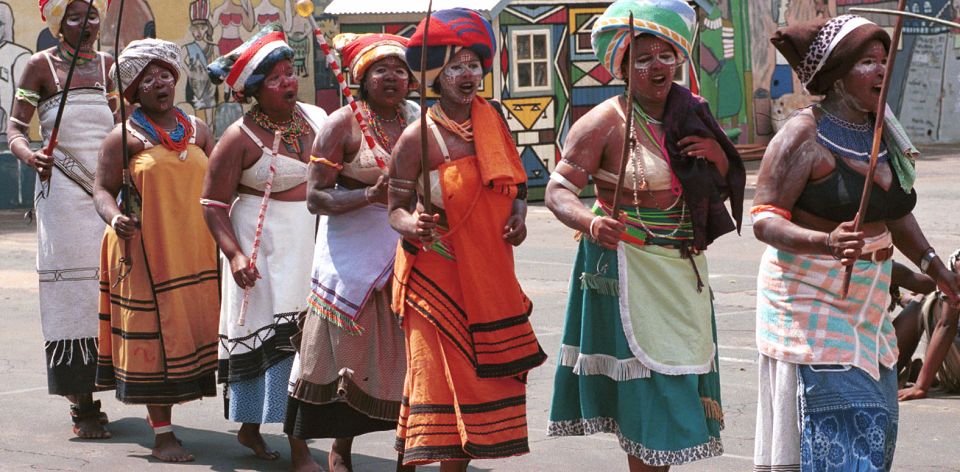In the 11th century, a massive migration of people took place across the continent. As a result, many people from southern Zaire moved to different directions and settled in most parts of southern Sahara. Among the tribes that took part in this major migration was Xhosa. The Xhosa tribe settled and became a part of the larger South Africa. The four major ethnic divisions among Black South Africans are the Nguni, Sotho, Shangaan-Tsonga and Venda. The Nguni represent nearly two-thirds of South Africa’s Black population and can be divided into four distinct groups; the Northern and Central Nguni (the Zulu-speaking people), the Southern Nguni (the Xhosa-speaking people), the Swazi people from Swaziland and adjacent areas and the Ndebele people of the Northern Province and Mpumalanga. Today, the Xhosa are the second largest cultural group in South Africa, after the Zulu-speaking nation.
Origin of Xhosa Tribe

It is a descendant of the Nguni clan. The Xhosa speaking group has various tribes with similar or related but divergent heritages. The major tribes include Bomvana, Mpondomise, Thembu, Xesibe, and Mpondo. Besides, Mfengu and Bhaca have adopted the language of Xhosa. The word Xhosa is from a legendary leader known as uXhosa. Another theory claims that the word Xhosa is derived from san or khoi-khoi language. The word Xhosa means ‘angry’ or ‘fierce’, the Xhosa being the fierce group. The Xhosa refers to their language as isiXhosa and themselves as amaXhosa.
Xhosa Language
It is the Bantu family agglutinative tonal language. Written Xhosa employs Latin alphabet style. Approximately 18% of the South African population speaks Xhosa. In addition, it has a number of mutual intelligibility with Zulu, particularly the Zulu spoken in towns. Most of the Xhosa urban dwellers, also speak Afrikaans and/or Zulu and/or English.
The language of Xhosa has 15 click sounds, borrowed from the current extinct Khoi-Khoi and the san languages of South Africa. Xhosa language has three primary click consonants: a palatal click, dental click, and a lateral click, printed with letter q, c and x respectively. A simple five vowels list also exists that is, (a, e, i, o, u). However, some of the vowels may be silent particularly at the word end. These vowels can be there in written Xhosa but barely perceptible in verbal language. In most cases, the Xhosa words tone is always lowest at the end.
See Also: 10 Reasons Why South Africa Is the Coolest Country In The World
Xhosa Culture
The Xhosa tribe have an affluent cultural heritage. They have also majorly contributed to the development and growth of South Africa. For instance, Rolihlahia later known as Nelson Mandela was the leading Icon in the freedom struggle in South Africa. Nelson Mandela became the first African president of the Republic of South Africa in 1994. He is from Xhosa.
Xhosa Food

Xhosa people share many food traditions with the other peoples of South Africa. The Xhosa cuisine is at its most authentic in the rural Eastern Cape. Some of the people’s popular staple foods include corn (maize) and bread, beef, mutton (sheep meat), and goat meat. Sorghum beer and Milk is often drunk in its sour form. Umngqushon is the most famous maize dish in Xhosa cuisine. It is a special dish made from white maize and sugar beans.
See Also: 10 South African Foods You Must Eat Before Death Knocks At Your Door
Others include Umvubo (sour milk mixed with dry pap), and Umfino (a wild spinach/cabbage mixed with a meal). Imithwane is a pumpkin leaf and butter mélange while is another special dish made from Ikhowa, a mushroom that grows after summer rains.
Eggs were traditionally taboo for women, and a new bride was not allowed to eat certain types of meat. Men were not also allowed to drink milk in any village where they might later take a wife.
Xhosa Traditional Attire
Recognised as the second largest cultural group in South Africa, after the Zulu-speaking nation, the Xhosas originally wear skin garments but today many of them wear western type clothes. This has however not totally displaced their traditional mode of dressing. For instance, women must always wear dresses that cover the shoulders and upper arm and dresses with beads are a sign of the traditional ancestor worship. Hats or scarves are worn most of the time, but especially in church.
Other unique Xhosa dress includes intricately sewn designs on blankets that are worn by both men and women as shawls or capes.
Other Major Facts About Xhosa Culture Include:

The Xhosa tribe has remained famous for the bravura and a wide range of their bead works. Traditionally, the woman’s life stages were reflected on ornamentations and garments. Newly married women wore a unique headdress, a dissimilar style by the women who had given birth etc. The Xhosa men are polygamous. However, currently only wealthier men have at least two wives. The men traditionally fulfilled the warrior’s role, stockman as well as a hunter while the women tilled the land and grew crops.
A clan consists of many groups. A chief, also referred to as Inkosi, heads each clan. The land is very important, and a serious emphasis is placed on awarding as per individual needs. The clan shared everything at all time. The families help one another to complete a certain task such as building of the hut. The Xhosa have diviners in their tribes, most of whom are women.

